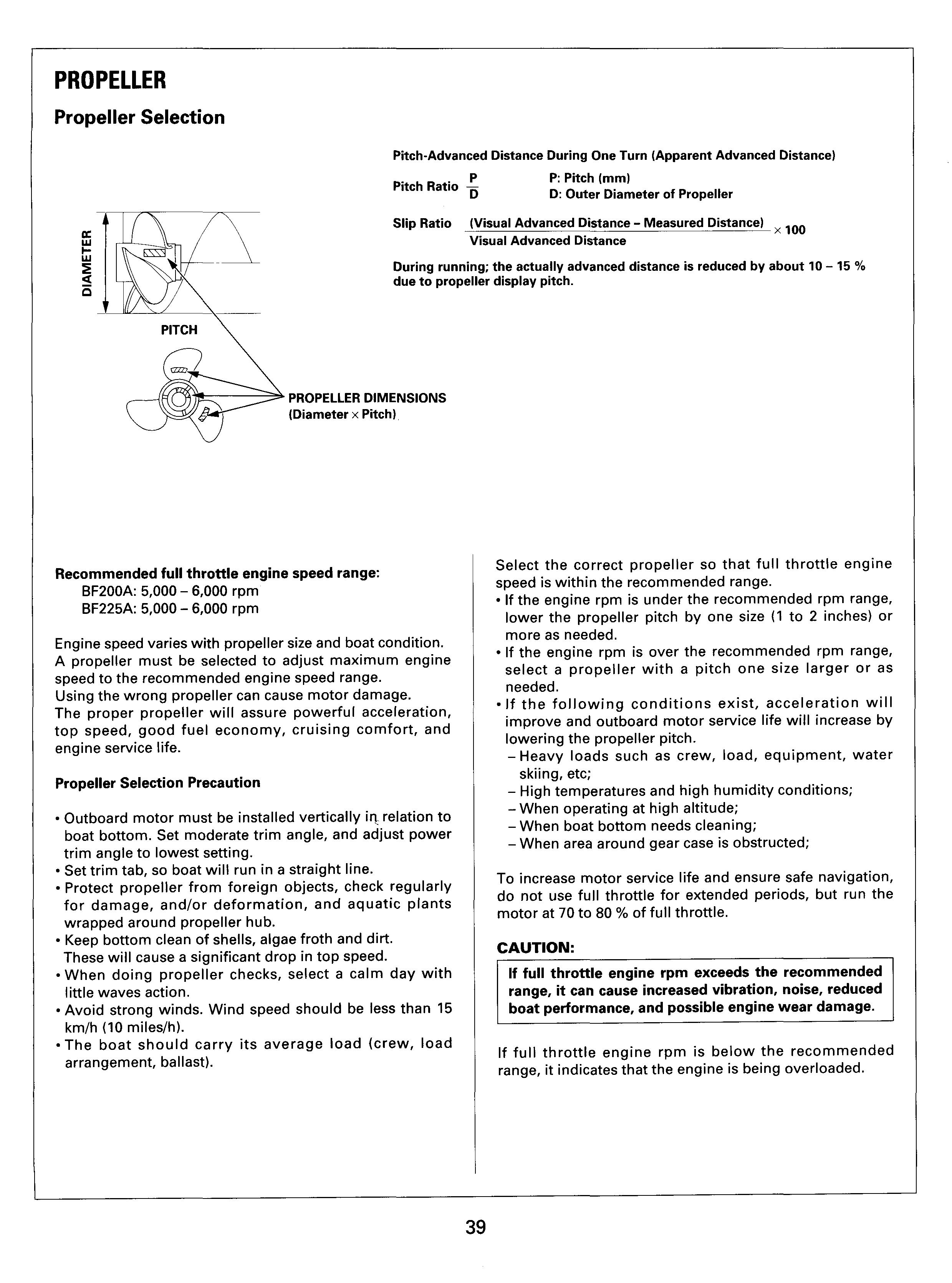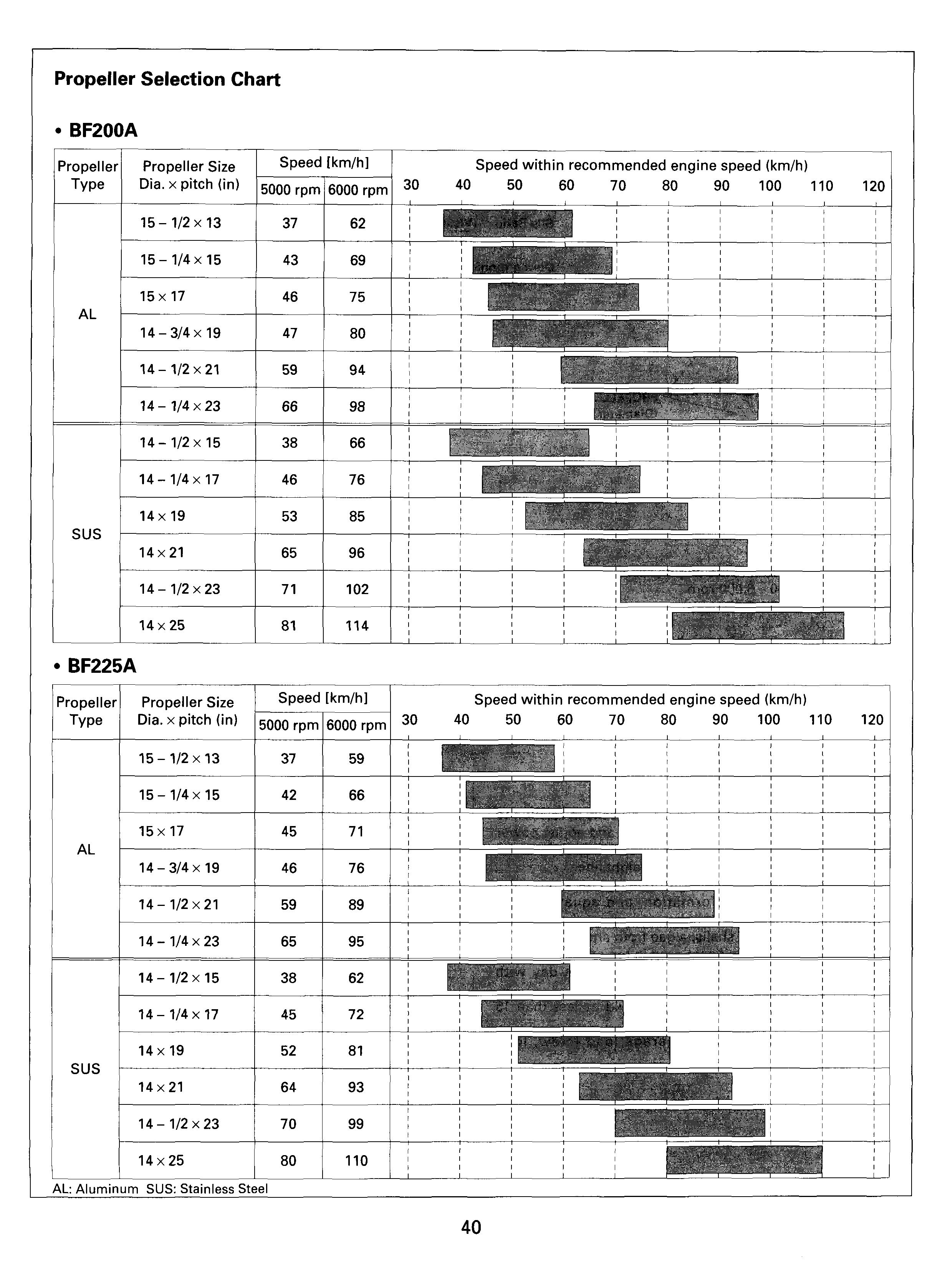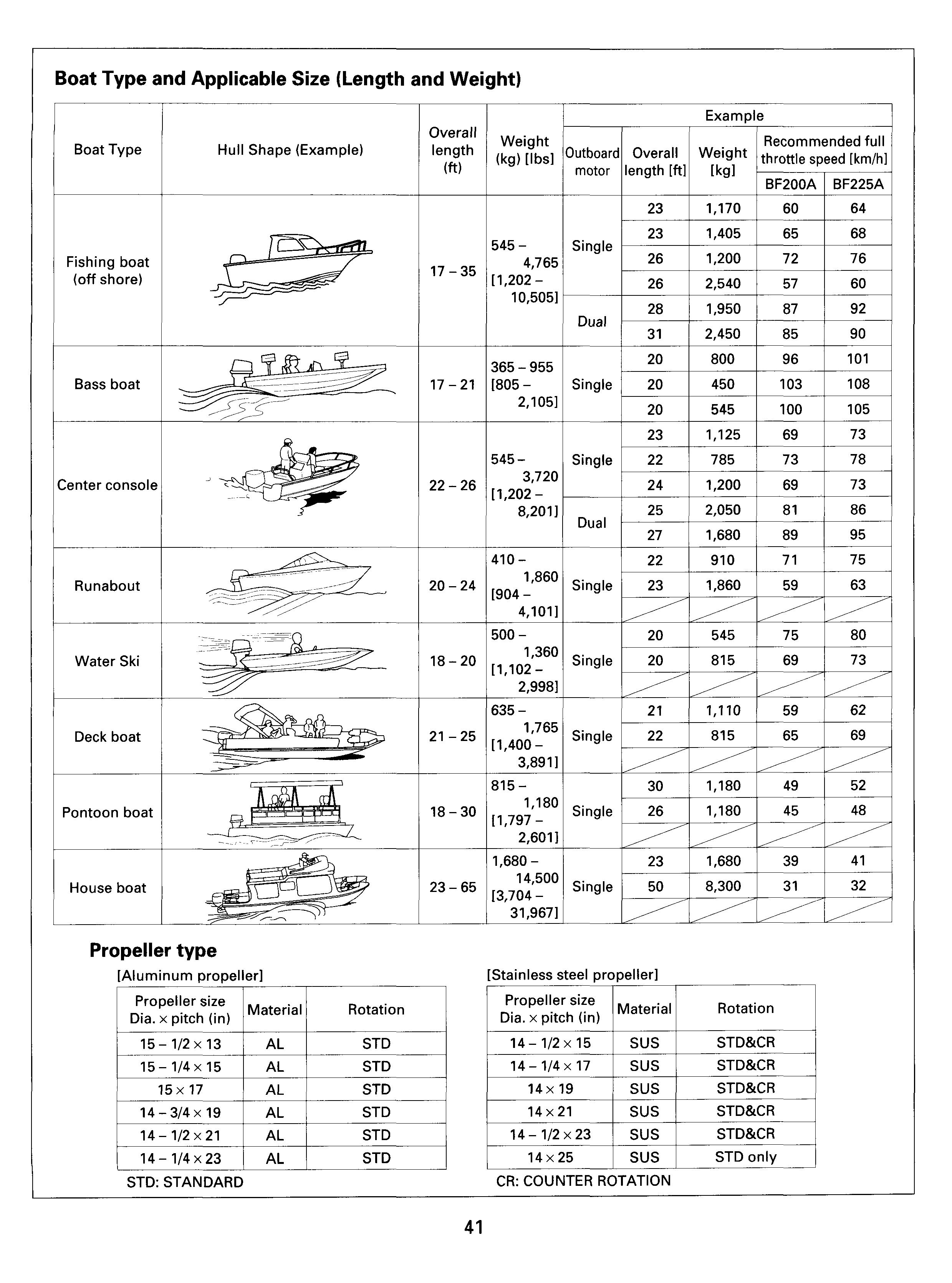
2 minute read
PROPELLER
Propeller Selection
Pitch-AdvancedDistance During One Turn (Apparent Advanced Distance)
P Pitch Ratio P: Pitch (mm) D: Outer Diameter of Propeller
Slip Ratio (Visual Advanced Distance - Measured Distance)
Visual Advanced Distance
During running; the actually advanced distance is reduced by about 10 - 15 % due to propeller display pitch.
Recommended full throttle engine speed range:
BFPOOA: 5,000 - 6,000 rpm
BF225A: 5,000 - 6,000 rpm
Engine speed varies with propeller size and boat condition. A propeller must be selected to adjust maximum engine speed to the recommended engine speed range. Using the wrong propeller can cause motor damage. The proper propeller will assure powerful acceleration, top speed, good fuel economy, cruising comfort, and engine service life.
Propeller Selection Precaution
Outboard motor must be installed vertically in, relation to boat bottom. Set moderate trim angle, and adjust power trim angle to lowest setting.
Set trim tab, so boat will run in a straight line. Protect propeller from foreign objects, check regularly for damage, and/or deformation, and aquatic plants wrapped around propeller hub.
Keep bottom clean of shells, algae froth and dirt. These will cause a significant drop in top speed. When doing propeller checks, select a calm day with little waves action.
Avoid strong winds. Wind speed should be less than 15 km/h (10 miles/h).
*The boat should carry its average load (crew, load arrangement, ballast).
Select the correct propeller so that full throttle engine speed is within the recommended range.
If the engine rpm is under the recommended rpm range, lower the propeller pitch by one size (1 to 2 inches) or more as needed.
If the engine rpm is over the recommended rpm range, select a propeller with a pitch one size larger or as needed.
If the following conditions exist, acceleration will improve and outboard motor service life will increase by lowering the propeller pitch.
-Heavy loads such as crew, load, equipment, water skiing, etc;
- High temperatures and high humidity conditions;
-When operating at high altitude;
-When boat bottom needs cleaning;
-When area around gear case is obstructed;
To increase motor service life and ensure safe navigation, do not use full throttle for extended periods, but run the motor at 70 to 80 % of full throttle.
CAUTION:
If full throttle engine rpm exceeds the recommended range, it can cause increased vibration, noise, reduced boat performance, and possible engine wear damage.
If full throttle engine rpm is below the recommended range, it indicates that the engine is being overloaded.
Propeller Selection Chart

Propeller type [Aluminum propeller] [Stainless steel ~ro~ellerl ..

Propeller Installation
Disconnect the battery cable terminal to prevent the engine from starting accidentally. Wear heavy gloves to protect your hands from sharp or nicked propeller blades.
1. Apply marine grease to the propeller shaft.
2. Install the thrust washer and the propeller on the propeller shaft.
Install the propeller washer and 18 mm castle nut. TORQUE : 1.0 Nm (0.1 kgfm, 0.7lbf.ft)
Thrust Washer
Tighten the 18 mm castle nut and secure with the split pin.
If the split pin does not align with the hole in the propeller shaft, adjust by turning the nut in the tightening direction. Do not exceed the maximum torque.
Maximum tightening torque: 44 N.m (4.5 kgf-m, 32 Ibf-ft)
After installation, bend the split pin ends as shown to secure.
If the commercially available parts are used, select the stainless steel parts.






